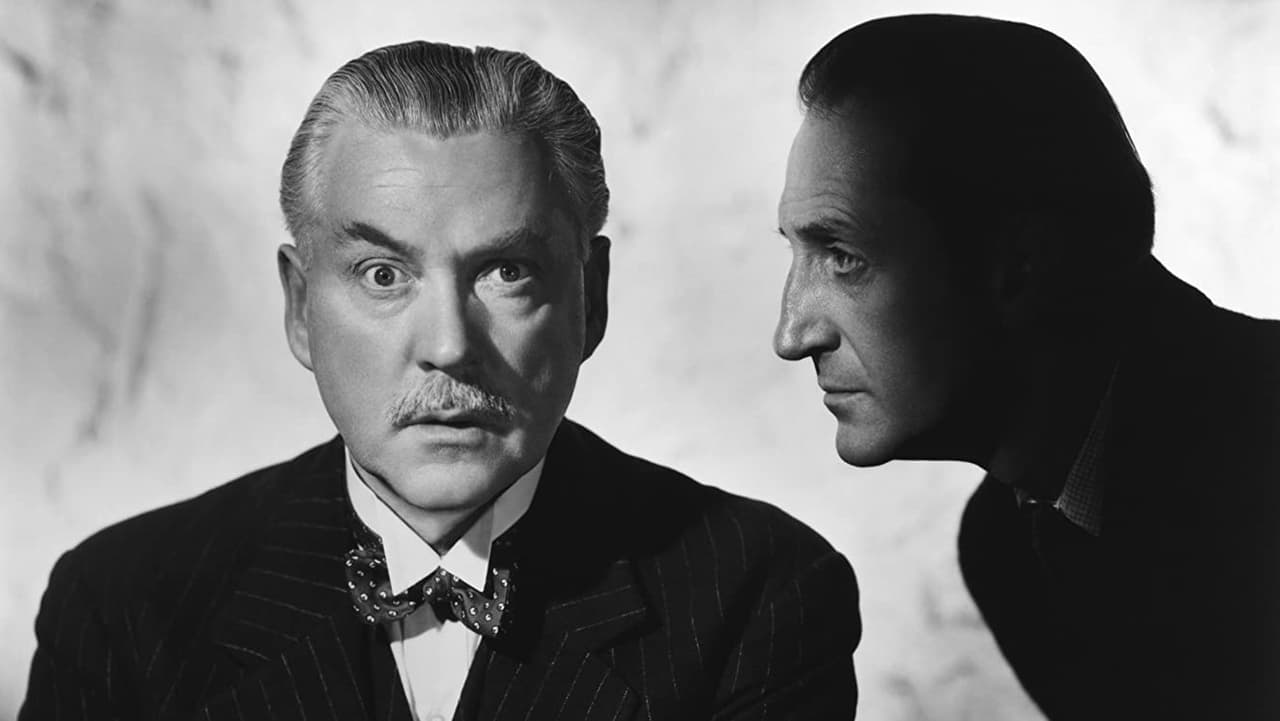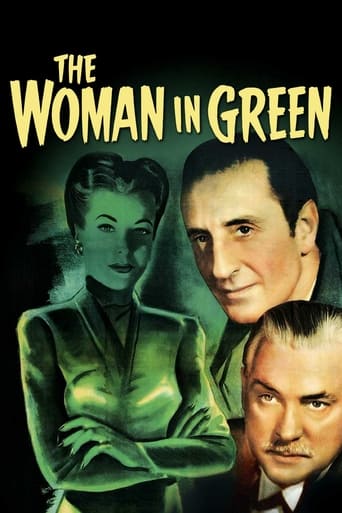

Basil Rathbone and Nigel Bruce is great as always in this murder-mystery concerning a Woman in Green. This one is better than the title of the film suggests... hypnotism, severed fingers, open windows, and , of course, murder! There are a few comical moments between Holmes(Rathbone) and Dr. Watson (Bruce), but that is nothing unusual for their on screen relationship. The duo have one of the best partnerships you will ever see on film - this film is no different.We have Holmes and Watson trying to find the mystery of the murdered women each with one of their fingers cut off - who and why? Trying to solve this mystery before Sherlock and Dr. Watson does is a great way to spend an hour and a half. 7.5/10
... View MoreWomen across London are being found murdered and Sherlock Holmes is invited to solve the crimes which have a strange quality in that the victims have their forefinger cut off This is another of the films featuring Basil Rathbone as Sherlock Holmes and Nigel Bruce as Doctor Watson . Being in the latter end of the franchise the action is set in the present day but doesn't involve itself in a propaganda exercise against Nazism and just concentrates on Holmes solving a series of murdersFor a film lasting little over an hour it is very streamlined and thankfully there's not a lot of padding . There are a few noticeable things such as Holmes referring to the Jack The Ripper murders and stating those murders involved women working in the same profession and being very careful not to state what that profession was . Also his know all attitude does become slightly over bearing to the point of annoyance . As a contrast Watson refers to hypnotists as being " charlatans fooling morons and buffoons " as soon as this is mentioned you know hat's coming next It's an entertaining enough thriller and one can understand why Rathbone and Bruce became cinematic legends after starring in this franchise and I remember enjoying these films as a child when they were shown on BBC2 in late 1970s . One can however get the feeling that this formula would be a bit too formulaic to a modern day audience and you can get too much of a good thing . And at the risk of heresy I can't help thinking Jeremy Brett gave the definitive performance of Holmes where he portrayed him as a cocaine addict . On a similar point did I hear the word " cannabis " being mentioned in this movie ?
... View More*Spoiler/plot- The Woman In Green, 1945, Sherlock Holmes is called to solve the "finger murders," a series of brutal and seemingly unconnected killings of women in London, and finds a beautiful hypnotist and his old enemy, Professor Moriarty, lurking in the shadows.*Special Stars- Basil Rathbone, Nigel Bruce, Henry Daniell and Hillary Brooke star.*Theme- Holmes solves every crime, eventually.*Trivia/location/goofs- Hillary Brooke is delightful. Mycroft Holmes, Sherlock's brother is mentioned, but not seen in this movie. Dr. Watson was supposed to remove his trousers under hypnosis, but he only lifts his trouser leg in the final film. Dr. Moriarity falls to his death, or did he? *Emotion-An enjoyable mystery in the Rathbone Holmes series. Several plot devices from many Holmes stories are incorporated into this film and this film has enough drama and intrigue to satisfy everyone.
... View MoreAnytime Sherlock Holmes meets Moriarty, he knows he's up against his greatest rival. This time, the mystery concerns a blackmail plot that convinces hypnotized victims that they might be serial killers. "The most hideous case since Jack the Ripper", a Scotland Yard detective notes, just as Holmes claimed in "Spider Woman". This time, Henry Daniell (so memorable in the same year's "The Body Snatcher") is Moriarty, back from the grave to lead the gang of killers using a weapon so vile and cruel it rivals Sweeney Todd's razors in hideousness. There's the usual bumbling humour by Nigel Bruce as Watson and intelligent observations by Holmes to make this one an enjoyable entry in the series. The ending is positively chilling.
... View More